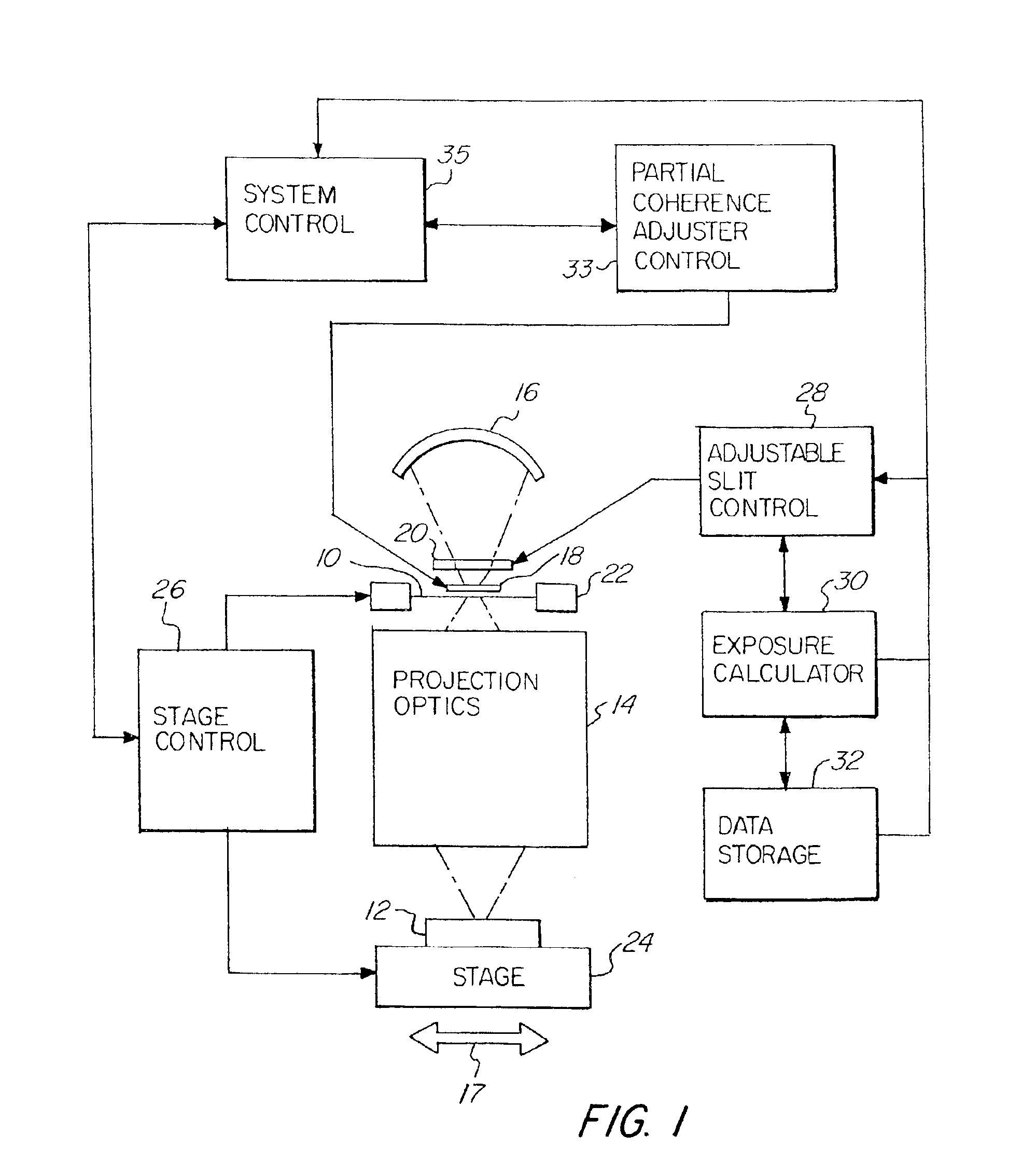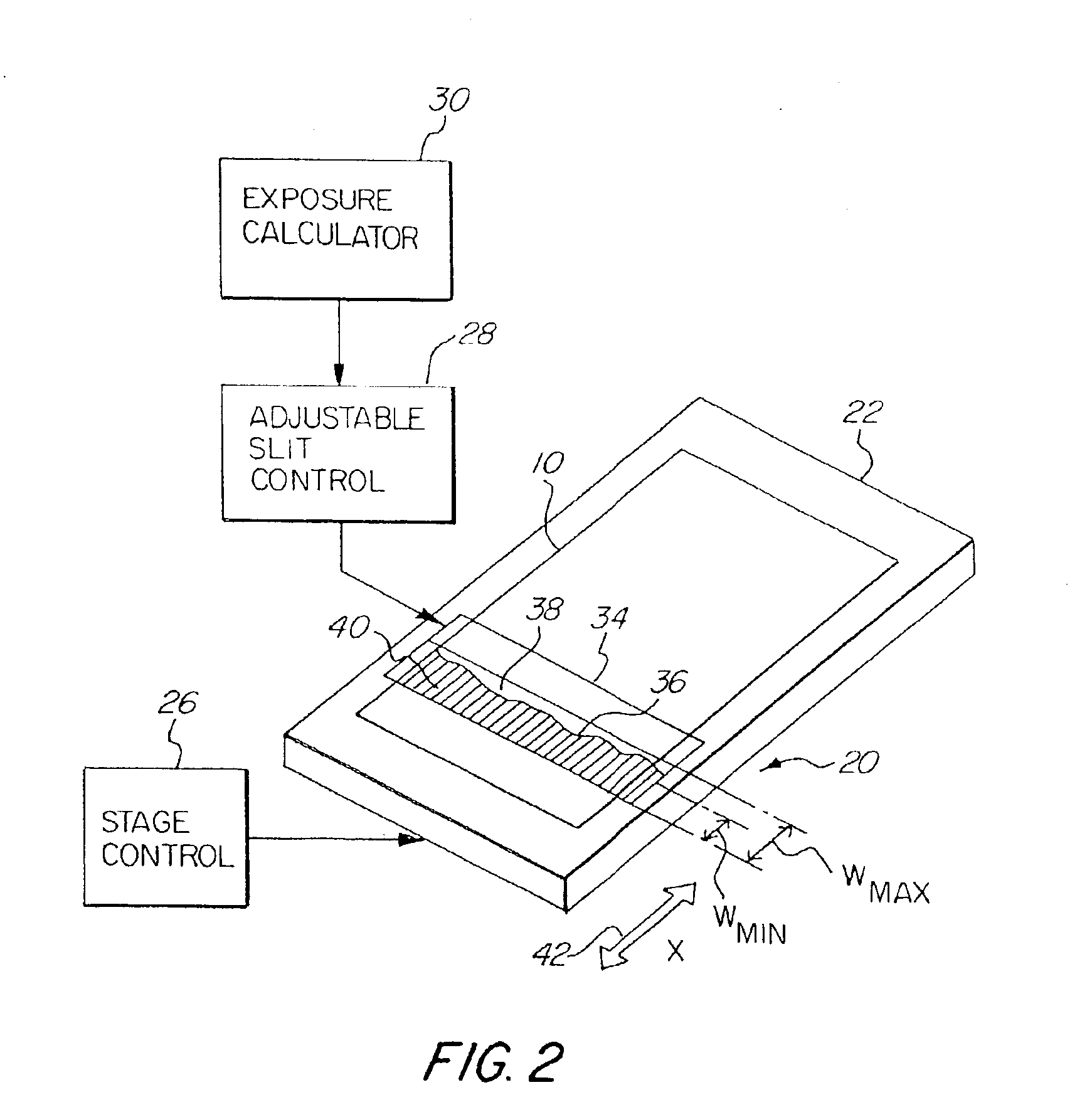DUV scanner linewidth control by mask error factor compensation
a mask and error factor technology, applied in the field of photolithography, can solve the problems of difficult to obtain correct imaging, difficult to correct imaging, and difficult to accurately image and print these small feature sizes on a photosensitive substrate, so as to reduce horizontal and vertical bias in printed features, reduce linewidth variances, and facilitate modification
- Summary
- Abstract
- Description
- Claims
- Application Information
AI Technical Summary
Benefits of technology
Problems solved by technology
Method used
Image
Examples
Embodiment Construction
[0034]FIG. 1 schematically illustrates a photolithographic device of the present invention. A mask or reticle 10 having a pattern thereon is imaged onto a photosensitive substrate or wafer 12. The image of the mask or reticle 10 is projected through projection optics 14 onto the substrate 12. An illumination source or system 16 is used to project the image of mask or reticle 10 onto the photosensitive substrate 12. A partial coherence adjuster or array optical element 18 selectively varies the emerging numerical aperture of the illumination along the slot illumination field and in a scan direction and therefore adjusts the partial coherence of the system. Adjustable slit 20 forms an illumination field, which is scanned over the reticle 10. A mask stage 22 and a substrate stage 24 are controlled by the stage control 26 and moved in synchronization so that the illumination field formed by the adjustable slit 20 scans the entire reticle 10 to reproduce an image thereof on the photosens...
PUM
 Login to View More
Login to View More Abstract
Description
Claims
Application Information
 Login to View More
Login to View More - R&D
- Intellectual Property
- Life Sciences
- Materials
- Tech Scout
- Unparalleled Data Quality
- Higher Quality Content
- 60% Fewer Hallucinations
Browse by: Latest US Patents, China's latest patents, Technical Efficacy Thesaurus, Application Domain, Technology Topic, Popular Technical Reports.
© 2025 PatSnap. All rights reserved.Legal|Privacy policy|Modern Slavery Act Transparency Statement|Sitemap|About US| Contact US: help@patsnap.com



